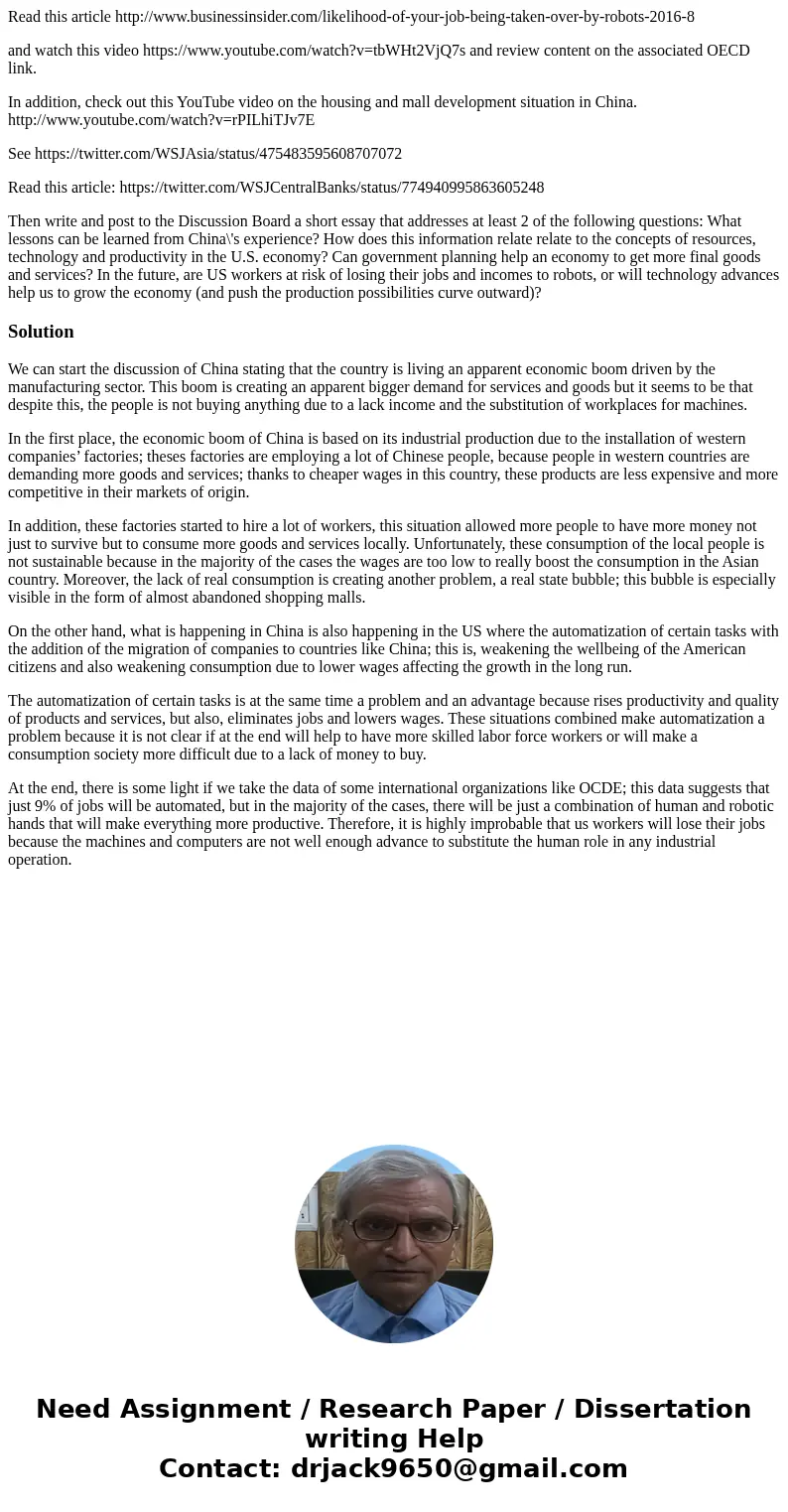Read this article httpwwwbusinessinsidercomlikelihoodofyourj
Read this article http://www.businessinsider.com/likelihood-of-your-job-being-taken-over-by-robots-2016-8
and watch this video https://www.youtube.com/watch?v=tbWHt2VjQ7s and review content on the associated OECD link.
In addition, check out this YouTube video on the housing and mall development situation in China. http://www.youtube.com/watch?v=rPILhiTJv7E
See https://twitter.com/WSJAsia/status/475483595608707072
Read this article: https://twitter.com/WSJCentralBanks/status/774940995863605248
Then write and post to the Discussion Board a short essay that addresses at least 2 of the following questions: What lessons can be learned from China\'s experience? How does this information relate relate to the concepts of resources, technology and productivity in the U.S. economy? Can government planning help an economy to get more final goods and services? In the future, are US workers at risk of losing their jobs and incomes to robots, or will technology advances help us to grow the economy (and push the production possibilities curve outward)?
Solution
We can start the discussion of China stating that the country is living an apparent economic boom driven by the manufacturing sector. This boom is creating an apparent bigger demand for services and goods but it seems to be that despite this, the people is not buying anything due to a lack income and the substitution of workplaces for machines.
In the first place, the economic boom of China is based on its industrial production due to the installation of western companies’ factories; theses factories are employing a lot of Chinese people, because people in western countries are demanding more goods and services; thanks to cheaper wages in this country, these products are less expensive and more competitive in their markets of origin.
In addition, these factories started to hire a lot of workers, this situation allowed more people to have more money not just to survive but to consume more goods and services locally. Unfortunately, these consumption of the local people is not sustainable because in the majority of the cases the wages are too low to really boost the consumption in the Asian country. Moreover, the lack of real consumption is creating another problem, a real state bubble; this bubble is especially visible in the form of almost abandoned shopping malls.
On the other hand, what is happening in China is also happening in the US where the automatization of certain tasks with the addition of the migration of companies to countries like China; this is, weakening the wellbeing of the American citizens and also weakening consumption due to lower wages affecting the growth in the long run.
The automatization of certain tasks is at the same time a problem and an advantage because rises productivity and quality of products and services, but also, eliminates jobs and lowers wages. These situations combined make automatization a problem because it is not clear if at the end will help to have more skilled labor force workers or will make a consumption society more difficult due to a lack of money to buy.
At the end, there is some light if we take the data of some international organizations like OCDE; this data suggests that just 9% of jobs will be automated, but in the majority of the cases, there will be just a combination of human and robotic hands that will make everything more productive. Therefore, it is highly improbable that us workers will lose their jobs because the machines and computers are not well enough advance to substitute the human role in any industrial operation.

 Homework Sourse
Homework Sourse